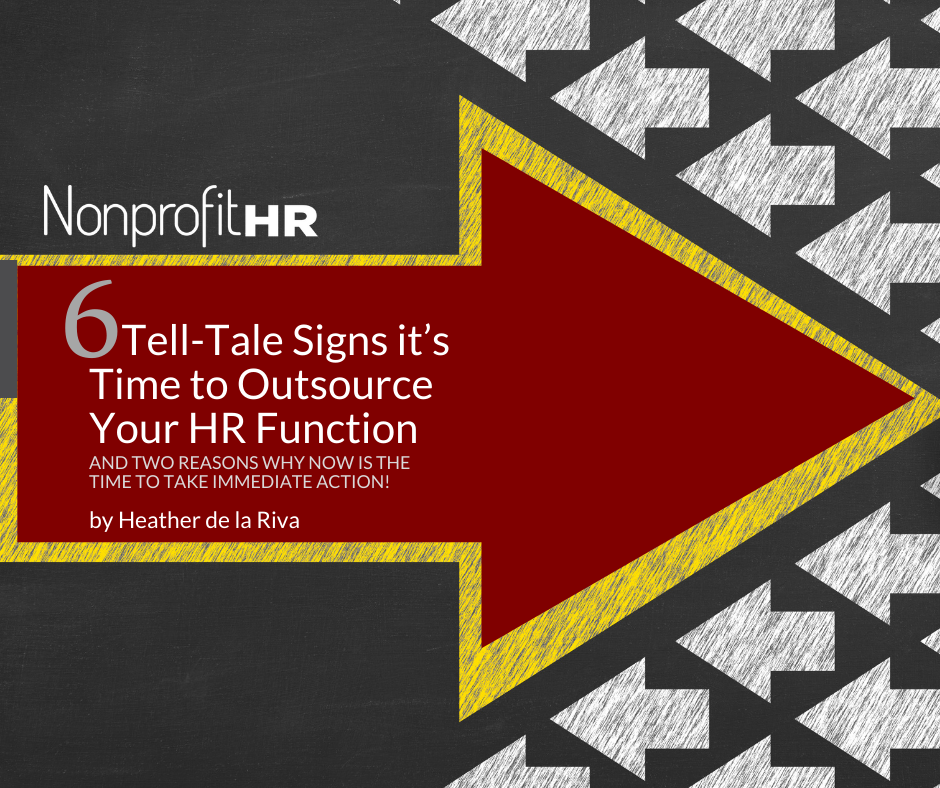WTOP: 5 ways nonprofits can…
At the Nonprofit HR conference in October, unlimited leave policies were a hot topic. Sam Cicotello, Chief Learning Officer at The Motley Fool emphasized in her Keynote how the culture of The Motley Fool relies, in part, on their “no-policy policy.” When it comes to paid time off (PTO) for employees, this means that they do not track employees’ hours and ration out paid personal, vacation or sick days. Employees simply take what time they need or want. Now, as Thanksgiving approaches, we are seeing the media scold big retail companies for requiring employees to work on Thanksgiving due to Black Friday sales and extended hours. In the spirit of gratitude that surrounds this all-American holiday, I would like to give thanks for the blessing of unlimited leave. Nonprofit HR is among an ever-growing group of employers who have eliminated or re-written their leave policies to allow their employees more freedom to take responsibility for their time both in and out of the office.
The premise of this radical shift away from carefully monitored leave time is, essentially, to foster a goal-orientation among team-members. The understanding is that the work will be done and deadlines will be met, but it is up to the employees to determine how and when exactly that happens. This is a frightening proposition for many employers, especially for nonprofit organizations where resources must be carefully allocated and every penny spent is under careful public scrutiny. The question people often ask when they find out that I have unlimited paid leave is, “but how does that work with that employee?” While I know exactly the personality that this question refers to, the fact is that there is no “that employee” on my team. This is, in part, due to careful consideration during hiring of each new team member at Nonprofit HR to ensure that candidates will thrive in this environment. Now, I can hear you thinking, “that’s great for you, but in my office, that would never work. People would just abuse it and then we would have no grounds to correct them.” Let me answer that question with another question: “would those employees’ performance suffer if they were in the office fewer hours or took more days off?” If the answer is yes, you would have grounds to have a conversation with them about their underperformance. If the answer is no, then it really shouldn’t make any difference to you, or perhaps it is a different performance management conversation that has nothing to do with PTO.
Critics of unlimited leave often cite examples suggesting that the openness of such policies actually makes employees feel like they cannot take time off, because they do not have a way to gauge what is considered appropriate by leadership. This brings me back again to culture. Of course the same system won’t work in every office or for every team. If you look above where I mentioned hiring, you will note that I said “thrive in this environment.” It is not just a matter of making sure that someone will not slack off, we also must take care to make sure that people will take time when they need it.
At the end of the day, this is a question of performance management, not vacation time. Your organization should have a strong performance management strategy to be sure that your goals are being met as well as a strong hiring process to identify high performers and candidates who fit with such a trusting culture. With SMART goals for performance and a clear strategy, it becomes redundant to monitor all those hours. Even better, everyone will be grateful that Typhoid Mary can stay home when she’s sick so that the whole office doesn’t catch it.
NOTE: before you get all excited and throw out your time-clock, let me make myself clear: eliminating allocated leave time does not mean that you do not have to track employees’ hours worked. Especially for non-exempt employees, this is crucial for compliance with employment law and compensating for overtime hours.





























